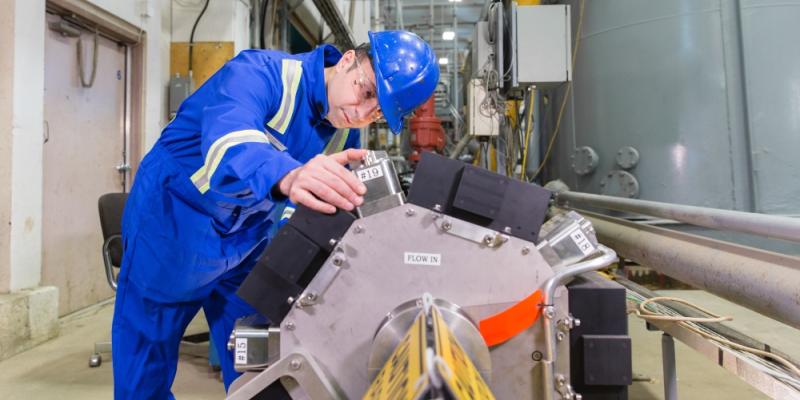The flow inside a slurry pipeline is a complex environment. It’s not easy for researchers to know what’s going on inside the pipe. Sometimes, transparent pipes are used to observe the flow, but frequently, slurries are opaque or sticky substances (e.g., oil (bitumen)) coat the interior walls of the pipe, making direct visual observation difficult.
SRC has over 60 years of history studying slurry flows in pipes. We have developed methods to measure or observe flow behavior in pipes. Tools developed in-house have included traversing gamma ray densitometers, rotating pipe sections, samplers, and particle velocity/concentration probes.
SRC uses non-intrusive tomography tools to obtain reconstructed images of flow inside pipelines. Three types of tomography tools have been deployed at SRC:
- ECT (Electrical Capacitance Tomography)
- ERT (Electrical Resistance Tomography)
- GRT (Gamma Ray Tomography)
The ECT/ERT tools (from ITS) can provide information on the concentration and/or velocity distributions of substances inside the pipe, provided the materials in the pipe have appropriate and sufficiently different conductive and/or capacitive characteristics.
SRC has a state-of-the-art, non-scanning gamma ray tomography tool. This tool can be used on pipe loops up to 100 mm in diameter and provides a 2-D reconstructed image of the density or concentration distribution within the pipe. This instrument has the capability to acquire measurements at frequencies as high as 100 Hz (this depends on the application), allowing for transient or dynamic fluid flows (e.g. highy turbulent slurries, gas-solid, gas-liquid, liquid-liquid flows) measurement, which was not previously possible. The combination of the ERT/ECT and GRT for a specific application allows for a full mapping of the velocity and concentration behaviour in pipeline flow.




